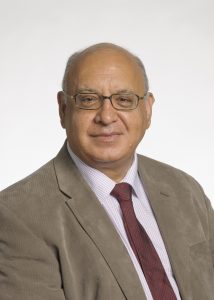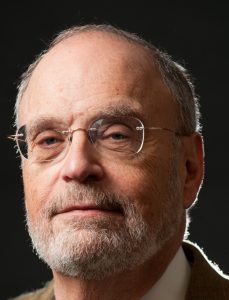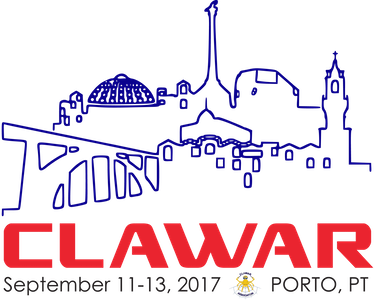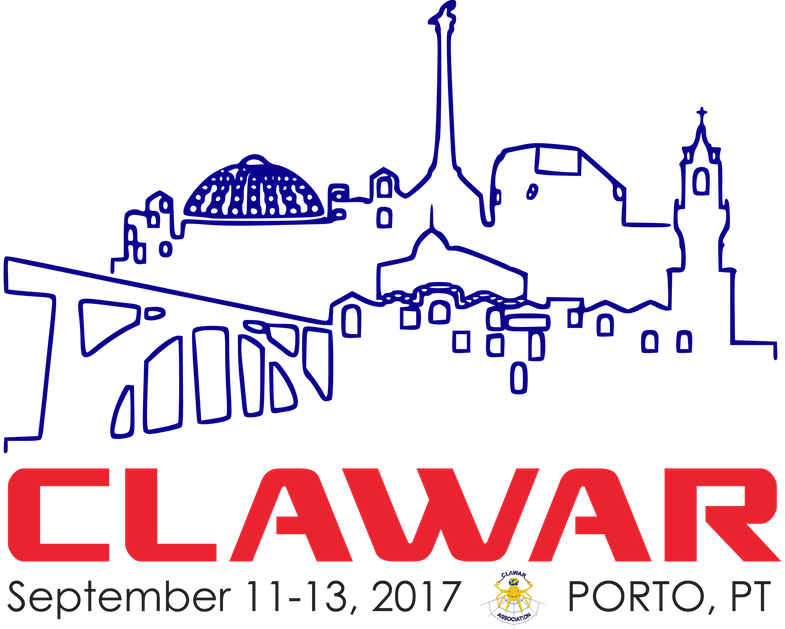
Prof. Luis Paulo Reis
University of Minho
Director of Artificial Intelligence and Computer Science Laboratory (LIACC)
Personal webpage
Title of presentation: High-Level Learning, Interaction and Cooperation for Humanoid Robots
Abstract: In the future, humans and robots will have to work together in complex environments, to solve difficult problems and perform hard tasks, as a team. Thus, methodologies to enable robots to learn, interact and cooperate with their human counterparts are needed, in order to allow this joint work. This talk will be focused on methodologies developed for creating multi-robot and human-robot heterogeneous teams with emphasis on the cooperation, interaction and learning methodologies developed on our projects: FC Portugal and HearBo. FC Portugal project developed methodologies for creating heterogeneous robotic soccer teams capable of following human/robot coach high-level advice using concepts such as strategy, tactics, formations and setplays. The project also developed methodologies for learning humanoid robot complex skills, using simulation, such as walking, kicking, getting up or passing/receiving a ball, although the methodologies developed may also be used for other types of skills and robots. The project enabled our research groups to win 4 World and 10 European robotic soccer championships of distinct leagues/competitions. At HearBo, together with Honda-RI Japan we developed human robot learning and interaction methodologies for humanoid robots that dance to the beat. The talk will be illustrated with videos from both projects.
Brief Bio:
Luis Paulo Reis is an Associate Professor at the University of Minho in Portugal and Director of LIACC – Artificial Intelligence and Computer Science Laboratory where he also coordinates the Human-Machine Intelligent Cooperation Research Group. He is an IEEE Senior Member and vice-president of both the Portuguese Society for Robotics and the Portuguese Association for Artificial Intelligence. During the last 25 years he has lectured courses, at the University, on Artificial Intelligence, Intelligent Robotics, Multi-Agent Systems, Simulation and Modelling, Machine Learning, Educational/Serious Games and Computer Programming. He was principal investigator of more than 10 research projects in those areas. He won more than 50 scientific awards including wining more than 15 RoboCup international competitions. He supervised 17 PhD and 95 MSc theses to completion. He organized more than 50 scientific events and belonged to the Program Committee of more than 250 scientific events. He is the author of more than 300 publications in international conferences and journals (indexed at SCOPUS or ISI Web of Knowledge).

Prof. Jaeheung Park
Dynamic Robotic Systems Lab,
Seoul National University,
South Korea
Personal webpage
Title of presentation: Compliant Whole-body Control for Humanoid Robots
Abstract: When humanoid robots are operated in a human environment, multiple contacts with the environment or human are often required. In these situations, compliant motion control can be very effective in dealing with contact uncertainties. In this talk, our recent research on compliant whole-body motion control of humanoid robots will be presented. First, I would like to start with our experience of DARPA robotics challenge, where the importance of compliant motion control in multi-contact situations is motivated among many other important technologies. For example, during door and drill mission. After the competition, much effort has been made to realize compliant motion control of humanoids, using two different platforms: position-controlled robot and torque-controlled robot. I would like to present our recent results in implementing compliant motion using our humanoid robots. Future perspectives in these directions can be seen through experimental demonstrations. Finally, other exciting work in our research group will be presented in relation to humanoid technologies, such as an autonomous vehicle, robotic hand, rehabilitation device for back pain, and CPR robot.
Brief Bio:
Jaeheung Park is an Associate Professor in the Department of Transdisciplinary Studies at Seoul National University, South Korea, since 2009. Prior to joining Seoul National University, he shortly worked at Hansen Medical Inc, a medical robotics company. He received the PhD degree from Stanford University, and the B.S. and M.S. degrees from Seoul National University. His research group is currently conducting many national projects in the topics of humanoid robots, rehabilitation/medical robots, and autonomous vehicle. He was a team leader of TEAM SNU for DRC Finals 2015 (DARPA Robotics Challenge Finals), which was a robotics competition for disaster response. In 2016, His team won the award given by Minister of Science, ICT, and Future Planning, at Challenge Parade that was held by the Korean Government. He has participated in organizing many international robotics conferences such as IROS, HUMANOIDS, and HRI. He has also served as a Conference Editorial Board or as an Associate Editor for many international conferences. He currently serves as a co-chair of RAS Technical Committee on Whole-body Control.

Prof. Tariq Sattar
TWI Chair and Director of the London South Bank Innovation Centre,
London South Bank University,
London, United Kingdom
Personal webpage
Title of presentation: Monitoring safety critical infrastructure with mobile robots
Abstract: Reliable Non Destructive Testing (NDT) is vital to the integrity, performance management and sustainability of capital assets in safety critical industries such as oil and gas, aerospace, transportation, power generation and off-shore and subsea operations. The talk will highlight opportunities to improve the NDT of industrial structures and decrease the cost of inspection by automating the NDT with mobile robots. The challenge is to develop robots that can provide access to test sites and perform reliable NDT on very large vertical structures or structures located in hazardous environments thereby eliminating the large expense of erecting scaffolding or lengthy preparation for rope and platform access before inspection can start. The presentation will show climbing and swimming robots developed to detect weld and corrosion defects on ship hulls, floating platforms, mooring chains, petrochemical storage tanks, pressure vessels, concrete structures, wind blades and aircraft wings and fuselage. These developments provide the possibility of saving costs by reducing outage times or (where possible) carrying out the NDT in-service thus preventing expensive outages.
Brief Bio:
Tariq Sattar, BSc (Bio), BSc (EEE), PhD, MIET, FBINDT
Professor Tariq Sattar is a pioneer in the development of robotic Non-Destructive Testing. He leads the research in this area in his role as the TWI chair and Director of the London South Bank Innovation Centre (LSBIC) based in Cambridge. LSBIC collaborates with TWI Ltd, the National Structural Integrity research Centre and London South Bank University to research and develop automation and robotics for non-destructive testing. He has led the development of mobile wall-climbing and swimming robots that provide access to very large safety critical structures to deploy a range of non-destructive testing techniques. These robotic systems have addressed the problems of performing robotic inspection in petrochemical storage tanks, in nuclear plant for inspection and decommissioning, on aircraft fuselage and wings, inside floating production oil storage tanks, on the hulls of ships, on large steel plates, on wind turbine blades, on aircraft turbine blades, on large buildings while operating on brick, concrete and glass surfaces and on off-shore mooring chains, oil and gas risers. His research has won eleven awards for best papers and industrial innovation in the field of robotics. It was selected by the Royal Society for its 350th anniversary summer science exhibition and again by the Royal Academy of Engineering as an interactive display in its zone at the Big Bang event, ICC ExCel Centre.

Prof. Steven Dubowsky
Departments of Mechanical Engineering and of Aeronautics and Astronautics,
The Massachusetts Institute of Technology,
Cambridge, MA
Personal webpage
Title of presentation: How Well Have Robots Done to Improve People’s Lives?
Abstract: Modern robotic technology has been an active research area for close to 50 years. From the beginning, it offered great promise to benefit society. This presentation focuses how well robotics has fulfilled its promise to improve people’s quality of life. During these 50 years, robots have been applied and/or considered for a wide range of tasks. The results of this study suggest that robotics has yet to make the dramatic impact on the quality-of-life for many people that one would hope. However, there remains great potential for this to change in the near future given the recent rapid advances being made robotic technology researchers.
Brief Bio:
Dr. Steven Dubowsky received his Ph.D. from Columbia University. He has been a professor in both the Mechanical Engineering and of Aeronautics and Astronautics departments at M.I.T and Director of the MIT Field and Space Robotics Laboratory. He has authored or co-authored nearly 350 papers. His research contributions have included; the adaptive and optimal control of robots, modeling of flexible manipulators, autonomous control of high speed vehicle in rough terrain, fuel cell power for field robotic systems, energy/clean water systems for challenging field environments and medical robotic devices for the elderly and for treatment of Parkinson’s patients. He has supervised more than 150 graduate student theses. Professor Dubowsky has also served as an advisor and consultant to the National Science Foundation, the National Academy of Science/Engineering, the Department of Energy, the US Army, NASA, ESA, and industry. He is also currently the CEO of PVPure Inc. Dr. Dubowsky is a Life Fellow of both the ASME and IEEE.
Dr. Jan Veneman
Tecnalia Research and Innovation, Spain
wearablerobots.eu
Title of presentation: COST Action CA16116: wearable robots for augmentation, assistance or substitution of human motor functions.
Abstract: The COST Action CA16116 – “Wearable Robots for Augmentation, Assistance or Substitution of Human Motor Functions” was recently started. The goal of such an Action is to create a European network in support of the academic, technological, and societal development of the field “Wearable Robots” across Europe. This presentation will introduce the Action, explaining how it is structured, and which topics will be addressed by the different working groups in the Action, specifically: Science, such as human motor control, underlying wearable robots; key technologies and tools for wearable robot design and development; application domains, differences and similarities; and ethical, legal and societal aspects of wearable robots. Finally, it will be clarified how interested researchers and other stakeholders can get involved and what activities can be expected over the coming years.
Brief Bio:
Jan F. Veneman works in the Medical Robotics Application Area of the Health Division, Tecnalia Research, and Innovation. He is project manager and senior researcher on rehabilitation robots and wearable robots, lately especially focussing on topics including regulatory issues, safety testing and benchmarking. Since 2013 he is coordinating the EC-FP7 consortium research Project BALANCE, on the development of a robotic exoskeleton with self-balancing control. He was elected Action Chair of COST Action 16116 on Wearable Robots and is active since 2012 international expert in several ISO and IEC standardization working groups related to medical robotics, especially exoskeletons.












